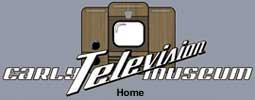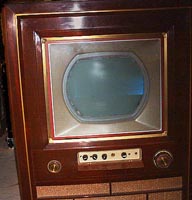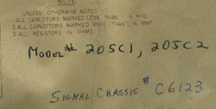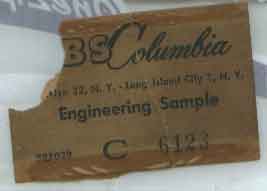Serial Chassis # C-6123 Piano virtuoso and showman Scotty Diamonds, a New Jersey based musician, has a colorful past. His father was an executive in the commercial broadcast hardware staff of CBS. Scotty still recalls as a small boy accompanying his father high up in the Chrysler building where CBS maintained a technical eagle’s nest above the Manhattan streets. In January 2007, Scotty kindly allowed me access to a rare vintage color television his father had used in his days with early CBS color. 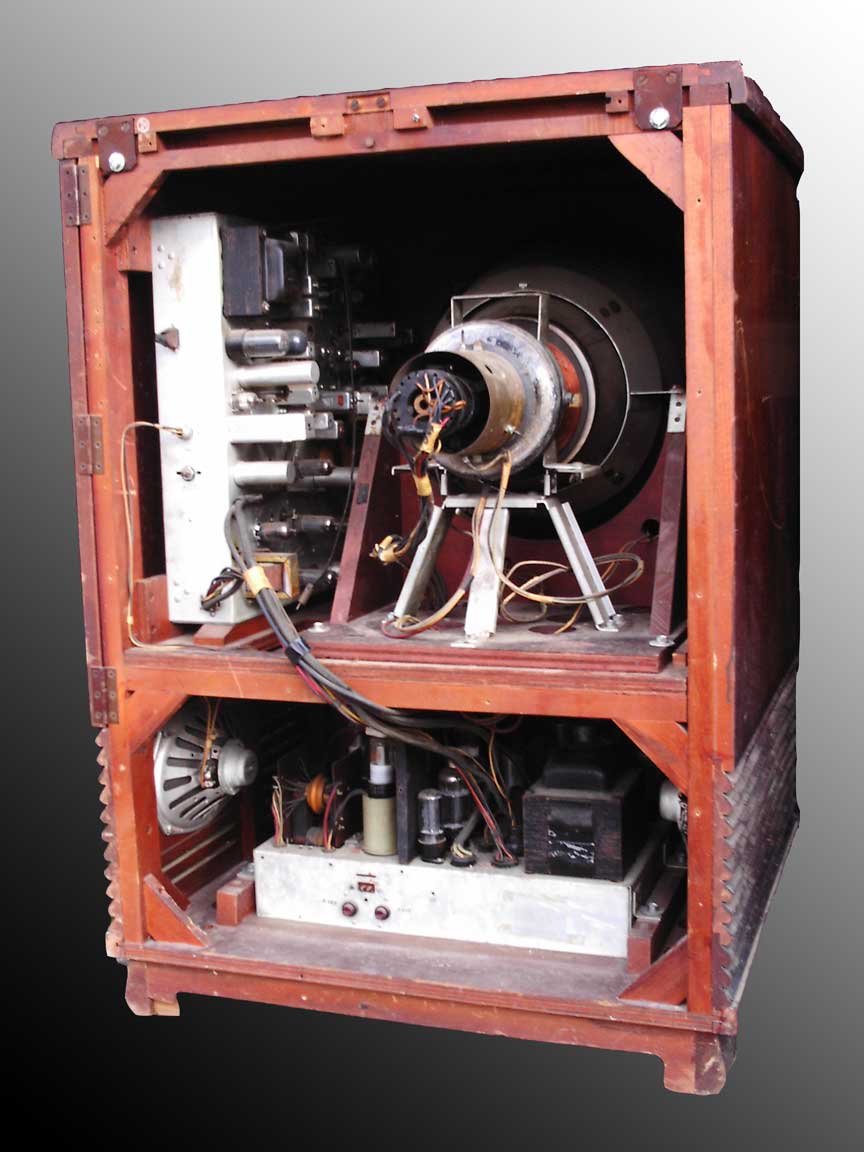 With this set, the fifth known CBS RX-90, some equally rare engineering documentation was found inside its cabinet — documentation that suggested a productive life with CBS engineering into the mid-1960s and probably beyond. It seems his Dad’s 15-in. RX-90 was not originally a production set for widespread mid-1954 sale, but rather initially an engineering test bed for circuit development and testing of procedures for the CBS Model 205 color television set, which used the larger CBS 19VP22 tricolor picture tube (image below) released later in 1954. Minor modifications needed to accommodate the larger, magnetic-convergence 19VP22 were made to the RX-90 chassis design.  It is telling that the serial numbers of a Model 205 were recently found written on the schematic diagram of this RX-90.
Telling, because the 205 serial numbers were identical to those on this label
found attached to this set, the RX-90 pictured above.
Back in those developmental days, an RX-90 'Engineering Sample' was apparently thought of as emulating a 205 with a 15-in. CRT.
Serial number C-6966 is one of the surviving 19-in. model 205 sets. Perhaps significantly, that is numerically greater than the known RX-90 Engineering Sample serial numbers, which include C-5182 (comp lete set) and C-5250 (chassis only).
This jockeying of model numbers on the schematic diagrams of Engineering Sample sets may be partially the result of a dearth of CBS Colortron picture tubes. In support of that contention, one of the steps in an engineering department alignment procedure for RX-90 and 205 chroma circuits states "If a picture tube is not available, use the following procedure...." This is from a document written in July 1954, when one might assume CBS tricolor CRT production flow would have matured.
This chassis, in its model 205 incarnation, was also capable of driving an early 22-in. tricolor CRT, the CBS HD-266, a rectangular CRT that was difficult to converge and so saw an early retirement. 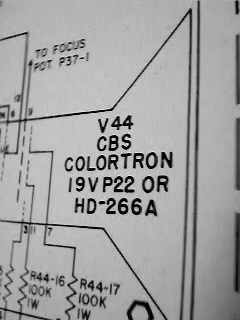 Very few of these large HD-266 CRTs exist.  One can be seen in the Early Television Museum in Hilliard OH. Another of these 22-in. tricolor CRTs is in the hands of a private collector in Illinois, and it is in unusual condition. This HD-266 is still under vacuum and has emission from all three guns according to its caretaker, “I have been able to test it for emission and it is still good (blue is a little weaker than the other guns), and some day it will have a picture on it.” Today it is rare to find an early CBS color set with an early CBS color CRT.
[Return]
|
